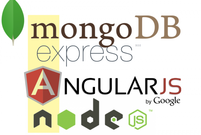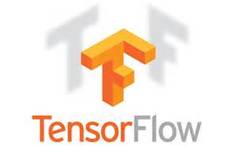 What my day consists of What my day consists of I've been doing software development for a long time, and recently, I've been working on some newer stuff with my startup, Synervoz. We are creating cutting-edge technology to bridge gaps in the realms of music and talking with our app TurnMeUp. For example, how many times have you been listening to music with earbuds or headphones when someone in the room is trying to talk to you? Our app lets you hear them without taking off your headphones. Not only that, but our technology lets people not in the room to talk to you in real-time without making you answer a phone call or interrupt that important Jamiroquai song you are listening to in the moment. Here is an outline of some of the technologies I've worked with on this project (and otherwise), which I find to be some of the most relevant technologies in the 2010's, yet they didn't even exist ten years ago! JavaScript JavaScript has been around a long time, but it's come a long way since its inception back in 1995 (when I graduated high school). It has always been a core technology of web browsers, but these days, it does so much more. JavaScript is an object-oriented programming language that uses weakly-typed variables, so it's very flexible. What makes JavaScript different than most of the languages with which I've worked, besides that fact that it is not compiled before deployment, is its asynchronous nature. Instead of making a call and waiting for a response, JavaScript considers the call and response two totally different processes. This can be confusing to developers used to synchronous design, but once you get used to promise chaining, it's a fun way to develop software! The MEAN Stack This awesome name for software tools is actually an acronym for its four key components: Mongo, Express, Angular, Node. All of these technologies are open and free to use by anyone, letting you create entire distributed web systems totally for free. With this framework, you can write the code on a free IDE like Netbeans, use tons of free modules from NPM, and deploy to free operating systems like Linux. And, not to mention, all of your code is written in the language of love: JavaScript.
Smartphones Nowadays, it's all about the smartphone! Around 2011, I began to focus my software development efforts on writing apps for smartphones because I sensed that soon, most non-power-users of computers wouldn't even buy a computer anymore; they'd just use their phone. Someone needed to write the code for this -- might as well be me. By this point, the market had clearly settled into two specific technologies: Apple's iOS and Android. Apple's SWIFT Apple has its own variant of the C language called "Objective C." This language is relatively low-level. It can be clunky to use, but it got the job done for OSX apps, so it was used as the language for iOS. As time went on and languages like RUBY, Java, C#, and even JavaScript showed developers an easier way to program, Apple got on board and wrote a new language from the ground up called SWIFT. It was a rocky start as they forced developers to evolve with the language: if you wrote code using earlier versions of SWIFT, Apple made you upgrade, and the process is still ongoing as they deprecate SWIFT 2.3 in favor of SWIFT 3.0. On the bright side, this language is becoming more and more cross-platform between iOS and OSX so that less code needs to be re-written to deliver an app that works on both iOS and macOS, which of course is good for us, since we are creating apps for both! Android and Java Not to be confused with JavaScript, Java is a compiled language very similar to Microsoft's C#, which runs on a framework similar to Microsoft's .NET platform. In fact, I'm convinced that Microsoft stole both of these ideas directly from Java. Android development is done with Java. Being an open source cross-platform language, it used to be a pain to develop on Android because there were so many ways to do it. There was a multitude of supported IDE's and ways to setup your developer environment, whereas with Apple, everything was done with XCode. This all changed when Google bought out IntelliJ and released "Android Studio." Now, developing android apps is arguably easier than developing iOS apps. Not to mention, Google only charges $20 for a lifetime developer membership, whereas Apple charges $100 a year. TensorFlow Artificial Intelligence is the new future. Depending on who you ask, this could be a good thing or a bad thing. In some spiritual circles who channel extra-terrestrial communication, legend has it that AI has overtaken many planets before us. Movies like "The Terminator" show a dystopian vision of what can happen when computers replace humans as the smartest ego-based consciousness on the planet. For now, it is simply replacing software developers. For example, a huge leap was made by switching Google Translate's engine from a "phrase based" approach to using the AI of TensorFlow. This resulted in the translation service not only being more accurate, but the service actually began to learn new languages that were never fed into it! TensorFlow is a new technology only released in 2015, and it is sure to lead the way in AI in the coming years. Between these technologies, I'd say this is what cutting-edge software development in the 2010's has become!
0 Comments
Leave a Reply. |
RussCategories
All
Archives
October 2022
Copyright (c) 2015 Russell Eric Dobda
|
 RSS Feed
RSS Feed
